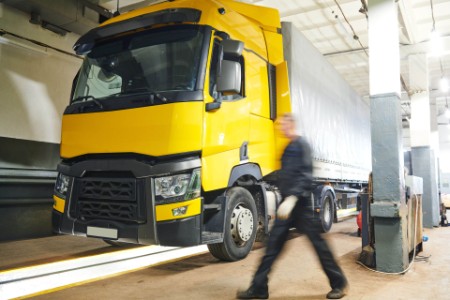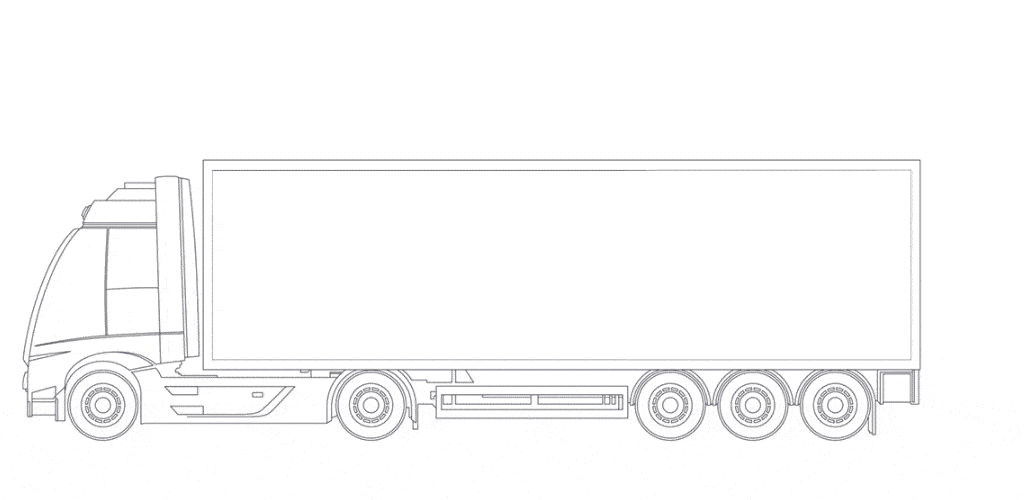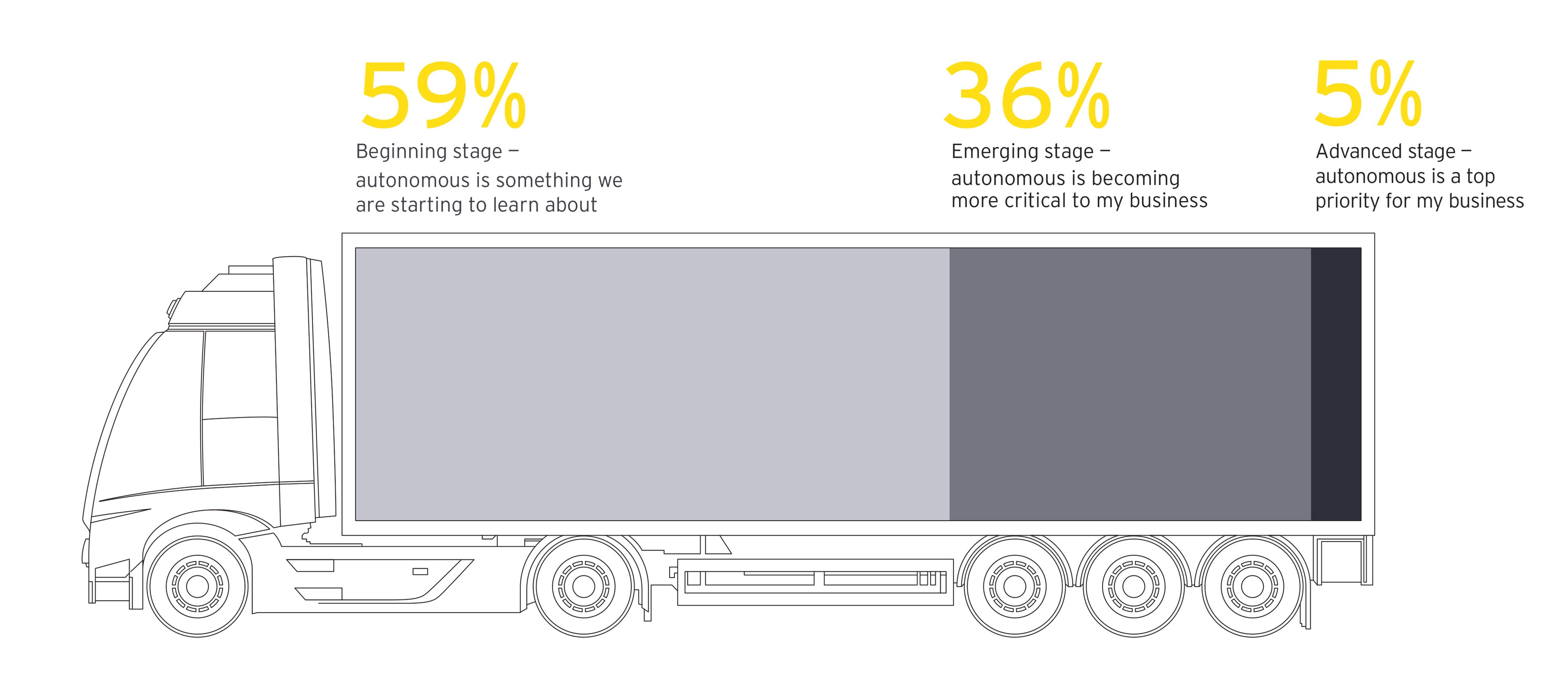
Chapter 1
AV benefits case for upgrading trucking
AVs could lead to higher profit margins and lower insurance costs in the automotive industry.
There are factors driving the exploration of use cases for autonomous technology. The ongoing driver shortage is near the top of the list, but the opportunity to significantly increase asset utilization is not far behind. In the US, truck drivers are currently limited to driving for 70 hours per week, roughly 3,000 miles, meaning that the average truck spends only 40% of its time carrying goods. Because autonomous trucks wouldn’t be bound by these rules, operators could use that asset, the truck, on an almost 24-hour basis. AVs would address both the limitations of human drivers and the reality that there aren’t enough of these drivers to handle the market’s current needs.
If AVs enable companies to deliver more goods with both fewer drivers and fewer trucks, the result could be lower costs and higher profit margins. This is an opportunity that is already being developed as global supply chains shift from physical to digital. Autonomy can remake how goods are delivered, using route optimization tools that boost efficiency, and maximize the use of available assets. Certainly there are unknown variables that still need to be identified, such as the expense of AVs and the cost comparison of replacing drivers with specialized tech personnel tasked with keeping the trucks on the road, but the opportunity to reduce spending through autonomous technology seems viable.
Autonomous supply chains
52%of senior supply chain executives say mostly autonomous supply chains (e.g., robots in warehouses and stores, driverless forklifts/trucks, delivery drones, fully automated planning, etc.) are either here or will be here by 2025.
Margins could also get a boost from lower insurance costs. The U.S. Department of Transportation estimates that more than 90% of serious motor vehicle accidents are caused by driver error. Lower-level autonomous technology with driver assistance would decrease the likelihood that driver inattentiveness or error results in an accident. Higher-level autonomy would eliminate the human error factor, further reducing accident risk and, with it, the cost of insurance.
Our predictions
- One of the biggest drivers of progress in the development of autonomous technology in commercial trucking will come from outside the traditional logistics industry. A growing trend in the market is companies seeking to bring their supply chain in-house, integrating as many functions as are feasible into the business. They find it more cost-effective to own or lease a fleet rather than work through a third party.
- Hydrogen will emerge as a viable fuel source for autonomous trucks. A hydrogen fuel tank doesn’t fit well in a passenger vehicle, but it proves to be a better fit on a heavy-duty truck.
- The success of autonomous trucking builds momentum for the greater study of AV use in passenger vehicles, creating new pilot programs and competition among automakers to build a market.

Chapter 2
Autonomous technology gains speed in multiple industries
Different business models offer flexibility to implement autonomy in transportation and logistics.
Many of the big tech players in the mobility space are engaged in the effort to advance autonomous technology, hoping to come up with a formula that can gain traction in the market. It’s not System A versus System B; dozens of ideas are on the table, driving the increased activity and interest in autonomous technology. EY analysts estimate that between now and 2030, we’ll see somewhere between 40% and 60% compound annual growth rate in the autonomous market.
Work is also taking place in private settings throughout the transportation and logistics space. Through considerable investment and experimentation, companies are applying autonomous technology within their own business operations to learn what works and what doesn’t. While most of this work is being done in a controlled setting, the activity still provides valuable insight that can be used to inform next steps within the industry.
Off the roadways, agriculture companies are exploring the viability of using AVs on farms to boost efficiency. Traditionally, farming work is done during the day, but AVs could work through the night, which would increase productivity.
Skeptics would suggest that AVs will continue to be the culmination of a five-year plan that never gets past year one, but many people said the same thing about electric vehicles, which are poised to become a commodity in the next decade. Autonomy may take a little more time to mature, but the investment being made in this area cannot be overstated.
As we study the market, four potential business models have emerged in a commercial autonomous trucking industry. There is a significant variation in each scenario in terms of the capital required for AVs and the necessary infrastructure to use the technology. Each of these models could disrupt the supply chain in a different way.
Four potential business models in a commercial autonomous trucking industry discussed below:
1. Retrofitted anonymous:
A company can use traditional trucks outfitted with its own self-driving technology, which sees the route largely through cameras and lidar laser sensors. Another option in this model is to have vehicles that drive themselves but are monitored from afar by remote drivers sitting in an office who can provide support when necessary. Remote control technology has proven successful in off-highway applications but will likely have more limited commercial operations in commercial trucking.
2. Autonomous platooning:
Platooning technology enables two or more trucks to travel in a tight, aerodynamic convoy by synchronizing their braking and adaptive cruise control through dedicated short-range communications.
3. Transfer hub:
Unmanned long-haul autonomous trucks would travel from exit to exit on freeways and swap trailers with trucks operated by local drivers at designated transfer stations. This model is designed to accelerate the introduction of unmanned trucks by limiting them to major freeways, where driving is easier to automate than on roads with intersections and cross-traffic.
4. Automated last-mile delivery:
The term “last-mile delivery” is used to describe the movement of goods from a transportation hub to its final destination. The goal of last-mile delivery is to transport an item to its recipient in the quickest way possible.

Chapter 3
New developments pave the way for AV adoption and engine options
Industry leaders are studying electrification and other technology to build the momentum for AVs.
There are signs of progress on the pathway to extensive commercial AV usage. Industry leaders are evaluating regulation that supports a broad adoption of AVs, whether they are passenger or cargo vehicles. The Biden administration may have autonomy on its radar, with new US Transportation Secretary Pete Buttigieg signaling support for both electrification and autonomous technologies for fleet and freight applications.
Last year, the U.S. Federal Highway Administration awarded a $4.4 million grant to the Indiana and Ohio Departments of Transportation that will involve deployment of smart logistics technology. The project will allow freight companies and truck automation vendors to use partially automated driving technology in daily operations on a stretch of Interstate 70 that spans about 175 miles between the two states.
Electrification is another variable in the conversation about autonomous technology. Each fleet has a specific set of characteristics that will determine its suitability to electrify. The EY organization released a report in February that found long-haul trucks were among the least suitable for electrification. The question becomes, which type of engine is best for an AV? Electric or diesel?
Opinions differ on how this will unfold. While it’s highly unlikely we would see an autonomous passenger vehicle without electrification, it could be different with commercial trucking applications. Industry observers will continue to study this and other issues, as many are anxious to keep the AV momentum moving toward developing an industry that works. This effort, bolstered by strong energy and investment into the evolving autonomy sector, offers hope to companies concerned that they can’t compete in the AV market. You don’t have to go it alone.
Autonomous safety
44%of polled automotive leaders said safety and security will be their biggest priorities in an autonomous ecosystem.

Chapter 4
Questions take a front seat in evaluating AV options
Companies should discuss their needs and desires now to hit the gas on their autonomy journeys.
As the autonomous industry continues to evolve, transportation and logistics companies should be evaluating their fleets and asking questions: how do we think about what fleets, or perhaps specific routes serviced by those fleets, are appropriate for a conversion from a driver fleet to one that is autonomous? What does this mean for our future employee needs, and how do jobs in our company and the industry, including drivers, change in an autonomous world? What opportunities could this shift eventually provide in terms of a realignment of resources or potentially new roles in the freight ecosystem?
Companies will also need to evaluate ownership options. Does it make more sense to lease or buy your AV fleet? How does autonomous technology in trucking impact other parts of the supply chain? What infrastructure will be needed for autonomous technology, and who will own it? Companies will need to consider how this would impact capital budgeting in the future.
The bottom line is there are variables that come into play. Take the time now to develop a plan that has built-in flexibility to adapt as the mobility landscape continues to change. Most importantly, buckle up and think about the opportunities that arise out of these initial challenges. Be part of the dialogue that enables autonomy to continue pushing forward. The transportation sector is about to get a whole lot more exciting.
Summary
Autonomous technology is closer to becoming commonplace on the nation’s highways, and transportation and logistics companies should embrace this opportunity for future success.



